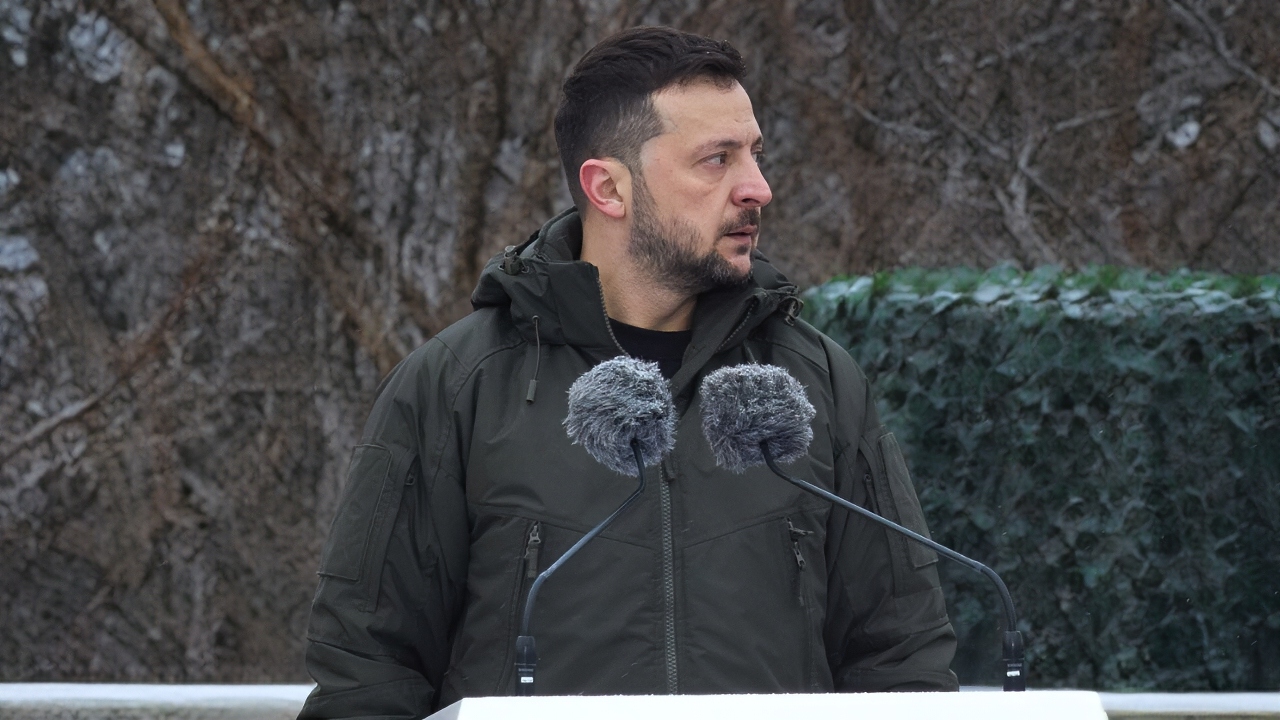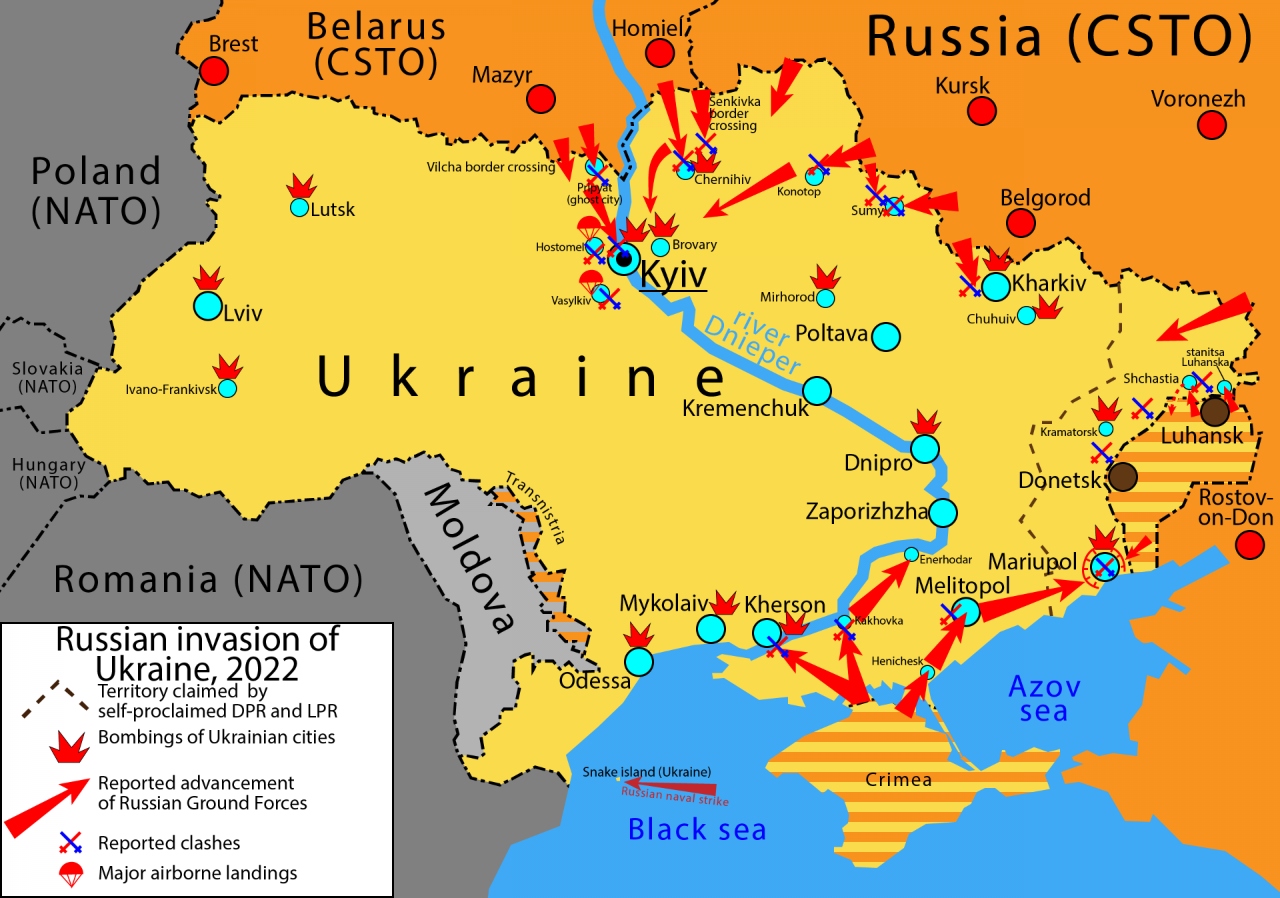Article Summary – A previously undisclosed U.S. peace plan presented in Kyiv would end the war on terms many Ukrainians see as capitulation.
-According to officials briefed on the 28-point proposal, Ukraine would formally accept Russia’s control of Crimea and occupied regions, slash its armed forces to 400,000, and give up long-range weapons—without credible guarantees Moscow won’t attack again.

Image Credit: Office the the President, Ukraine.
-The framework, reportedly shaped through secret talks between Trump envoy Steve Witkoff and Russian fund chief Kirill Dmitriev, has sparked alarm in Kyiv and Europe.
-EU foreign policy chief Kaja Kallas insists any deal must have Ukrainian and European consent and include real Russian concessions.
Ukraine Peace Plan Leak: The U.S. Is Pushing Kyiv Toward a One-Sided Deal
Ukrainian President Volodymyr Zelensky on Nov. 20 was scheduled to meet with senior U.S. Army civilian and military officials in Kyiv—the highest-level Army delegation to visit the Ukraine capital since Russia invaded the country in February 2022.
The visit came after the U.S. presented a previously unannounced plan to end the war.
“The good news is that there is an interest from the U.S. side in ending the war,” said a Ukrainian defense industry executive speaking from the far-western region of the country, near the border with Poland.
“The bad news is that this is a plan that calls for substantial concessions on the part of Ukraine, while at the same time Russia gives up almost nothing in return,” he continued. “There are also no concrete guarantees that Russia would not attack Ukraine again—just promises on paper. We have all been here before. It’s that useless piece of paper called the Budapest Memorandum.”
The proposal comes after secret meetings between Russian Sovereign Wealth Fund Manager Kirill Dmitriev and U.S. Special Envoy Steve Witkoff, a long-time associate of U.S. President Donald Trump. The plan calls for Ukraine to give up land to Russia—some of it land that Moscow’s forces have tried and failed to take for more than a decade.

T-84 Tank Ukraine. Image Credit: Creative Commons.
A List of Concessions
The plan includes Ukrainian concessions that were previously rejected because they constitute an unacceptable capitulation to Moscow.
People briefed on the plan state that Ukraine is being asked to give in to some of Russia’s key demands. At the same time, they say, it remains unclear what—if any—comparable concessions Russia would pledge to make in return.
With regard to territory, the plan calls for the “recognition of Crimea and other regions that the Russians have taken,” said one source familiar with some of the details. Russia’s Army currently occupies around 20 per cent of Ukraine’s territory, much of it decimated by fighting,
“There are parts of the country that look more like a moonscape now than they do the regions of Ukraine they once were,” said the Ukrainian defense enterprise executive. “Russian destruction of Ukraine cities has been brutal and lends a new meaning to the concept of ‘scorched earth.’”
In September 2022, the Kremlin announced that it was officially declaring the annexation of four Ukrainian regions—Donetsk, Luhansk, Zaporizhzhia and Kherson—although it did not then, nor does it now, fully control any of them. Russia also invaded and annexed the Crimean Peninsula from Ukraine in 2014.
Leaving Ukraine Defenseless
Russian President Vladimir Putin has consistently and woodenly demanded that Ukraine completely withdraw its troops from Donetsk and Luhansk, two regions his military has been trying for more than a decade to gain control over.
Putin at one time offered to freeze the frontlines in place in the southern Zaporizhzhia and Kherson regions. This was according to Turkey’s foreign minister, who mediated three rounds of Ukraine-Russia peace talks earlier this year.
Ukraine has said it will never officially recognize Russian control over its territories, but has also admitted that it might never be able to take them back with military force and would have to depend on diplomatic processes instead. But ceding the territory in the Donetsk and Luhansk regions that Ukraine still controls would leave Ukraine helpless against future Russian attacks.
“It is a matter of our country’s survival,” Zelensky said recently.
Putin’s almost unchanging maximalist demands would require Ukraine to cut back the size of its army to 400,000 personnel, which would be less than half its current size. Kyiv would also be required to give up all long-range weapons.
This is consistent with other Russian demands at talks in Istanbul earlier this year: a reduction in Ukraine’s troop numbers, a ban on the country conducting any mobilization, and an end to the supply of Western weapons and other military aid. Russia has also repeatedly said it will not tolerate any NATO troops on Ukrainian soil.
In contrast, Ukraine wants concrete Western-backed security guarantees, including a European peacekeeping force, to prevent Russia from re-invading in the future.
The details of the plan seem so one-sided that “it seems that the Russians proposed this to the Americans, they accepted it,” said a senior European official. “An important nuance is that we don’t understand whether this is really Trump’s story” or “his entourage’s,” he added.
The EU’s top foreign policy official, Estonia’s Kaja Kallas, said any peace settlement must have the agreement of both Kyiv and Brussels.
“For any plan to work, it needs Ukrainians and Europeans on board,” Kallas told the press in advance of a meeting of EU foreign ministers in Brussels.
“We have to understand that in this war, there is one aggressor and one victim. So far we haven’t heard of any concessions on the Russian side,” she added.
About the Author: Reuben F. Johnson
Reuben F. Johnson has thirty-six years of experience analyzing and reporting on foreign weapons systems, defense technologies, and international arms export policy. Johnson is the Director of the Asia Research Centre at the Casimir Pulaski Foundation. He is also a survivor of the Russian invasion of Ukraine in February 2022. He worked for years in the American defense industry as a foreign technology analyst and later as a consultant for the U.S. Department of Defense, the Departments of the Navy and Air Force, and the governments of the United Kingdom and Australia. In 2022-2023, he won two awards in a row for his defense reporting. He holds a bachelor’s degree from DePauw University and a master’s degree from Miami University in Ohio, specializing in Soviet and Russian studies. He lives in Warsaw.
More Military
The YF-23 Black Widow II Stealth Fighter Almost Made the Ultimate Comeback
The New Leopard 2A8 Tank Has a Message for the Russian Army
The F-22J Raptor Stealth Fighter Will Never Fly For Japan (China Is Smiling)










